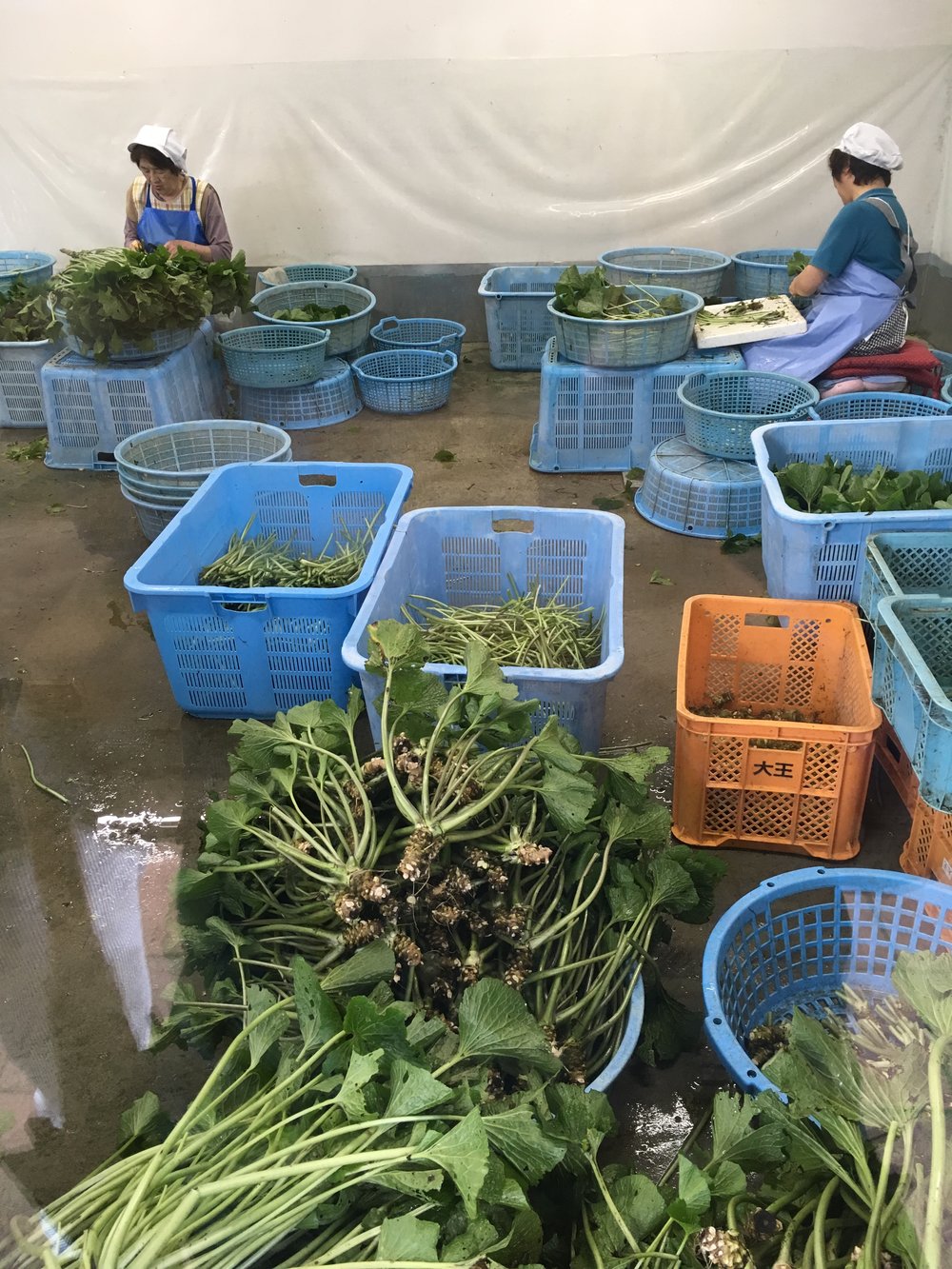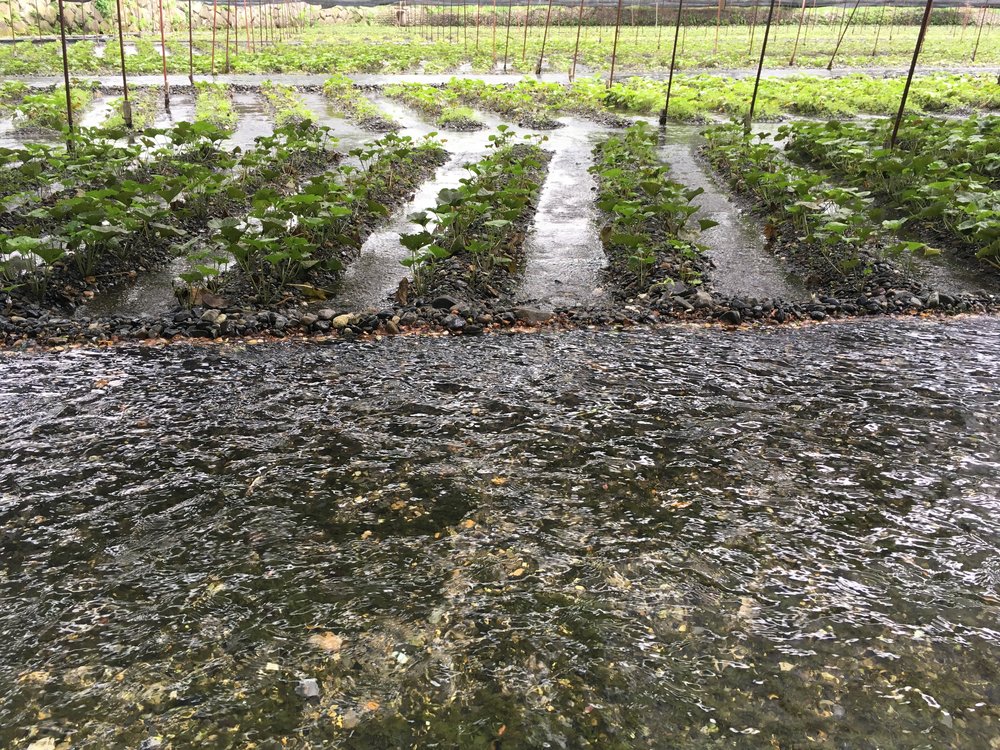
Wasabi is an important ingredient in Japanese cooking. It is of course used for sushi, but also with tofu, soba noodles… It is an autochthonous plant that grows naturally nearby clear streams. Historically it was first used as medicine in Nara period (700AD) before being popularized as food during the middle age: Muromachi period (1300~). And probably with the sushi boom in the early 1900’s wasabi has been more in demand and a few farms were created. That’s then that the now world biggest wasabi farm started. Daio farm started in 1910 but it took about four decades to become a decent wasabi farm and what it is now. One can easily imagine the landscape transformation such an installation has provoked and how intensive production to meet demand and keep price low affects the rural and natural areas. Yet Daio wasabi farm is an interesting place to visit and it is quite beautiful. The super pristine waters needed for the culture of wasabi, the little plants in the rock bed and the curvy lines of the field bordered by leafy willow trees are really quiet and peaceful. It is a very different landscape from those usually seen in Japanese. Picturesque like a Seine and Marne village cherished by the Japanese painters in the 1900’s or the japonism painters (top picture). Visiting Daio farm is a really nice stroll. It is also possible to see people at work to extract the stem from the plant (upper picture), visit the little history museum and try some wasabi food (we had ice cream). Since they also sell fresh wasabi at the farm I was looking for a cookbook or something to learn more about how to use wasabi, but none was available. An other time…

Daio wasabi farm: free entrance, open all year round from 9:00〜17:20, count 1-2h stroll
